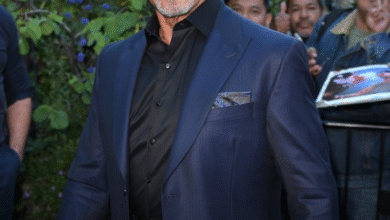When Marilyn Monroe Took Over Niagara Falls: The 1952 Filming of Niagara
OPINION: This article may contain commentary which reflects the author's opinion.
In June 1952, Niagara Falls transformed from a honeymoon hotspot to a buzzing film set as Hollywood’s rising star Marilyn Monroe arrived to shoot the noir thriller Niagara. For two weeks, the iconic waterfall city became the backdrop for a suspenseful tale starring Monroe alongside Joseph Cotten — and the local community got a front-row seat to Hollywood glamour and drama.
A Star’s Arrival and the Local Transformation
Filming officially kicked off on June 2, with Monroe herself arriving on June 5, quickly becoming as much a spectacle as the falls. For the next fortnight, Monroe stayed in Niagara Falls, lodging in room 801 at the General Brock Hotel (today’s The Brock Niagara Falls Fallsview, Tapestry by Hilton)—a room that remains a coveted spot for fans to this day.
The film crew worked across various city landmarks, from the old post office and city hall to the hospital and the quaint neighborhood of Chippawa. One memorable scene—where Cotten’s character steals a boat—was filmed along Bridgewater Street in Chippawa. The city’s famed Rainbow Bridge, the local bus station, and the Rainbow Carillon Tower also featured prominently, giving viewers a vivid sense of place.
Sets, Sightseeing, and Local Involvement
To bring the story to life, a six-unit set known as the Rainbow Motel was specially constructed in Queen Victoria Park by local contractor Arthur Jolley. Though dismantled after filming, the motel lingered in local memory, with tourists asking about it for years afterward.
Monroe found time to explore the area between takes, visiting Queen Victoria Park, Dufferin Islands, and Table Rock House. She even toured the Oneida silverware plant, now replaced by Casino Niagara. Some locals were lucky enough to appear as extras, including scenes aboard the Maid of the Mist boat, further blending the film’s story with the community’s fabric.
A Career-Defining Role
Niagara marked a significant milestone for Monroe. Playing Rose Loomis, a troubled and seductive woman plotting to murder her husband, Monroe earned her first top billing. The film showcased her acting range beyond the blonde bombshell stereotype and helped cement her status as a leading lady.
Following Niagara, Monroe’s star continued to rise with hits like Gentlemen Prefer Blondes and How to Marry a Millionaire debuting in 1953.
Legacy and Local Memories
Premiering in Canada on January 28, 1953, at Niagara Falls’ now-closed Seneca Theatre, Niagara was notable for its $2 million budget and vibrant Technicolor presentation—a rarity for a noir thriller at the time.
Decades later, older Niagara Falls residents still recall the excitement when Marilyn Monroe graced their city, turning the falls into a backdrop for Hollywood magic and making her the area’s biggest attraction—even if just for a fleeting moment.
Marilyn Monroe’s brief but memorable visit to Niagara Falls remains a cherished chapter in the city’s history, forever linking the shimmering waterfalls with the glow of classic cinema.



